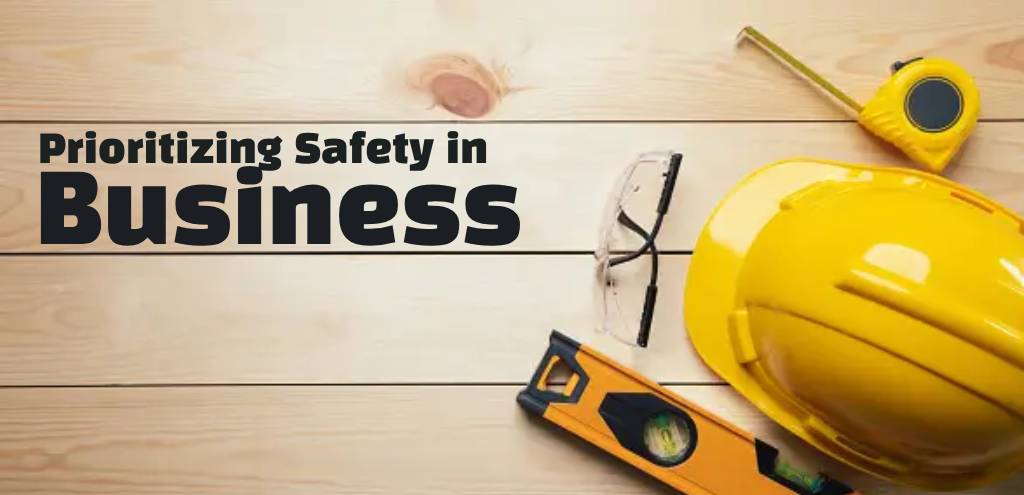In today’s business landscape, putting workplace safety at the forefront is not just a legal requirement but a fundamental aspect of creating a secure and confident working environment.
This detailed exploration delves into the essential equipment and strategies that are key to maintaining high safety standards across various business sectors. These tools and methods are crucial in reducing risks and ensuring the well-being of employees.

1. The Critical Role of Workplace Safety
Grasping the Essentials of Safety at Work
Workplace safety is more than a policy – it’s the backbone of efficient and responsible business operations. Creating a safe work environment is key to safeguarding employees from potential harm, fostering a positive workplace culture, and improving productivity.
To achieve this, understanding potential hazards, providing comprehensive training, and ensuring the availability of appropriate safety equipment are vital steps.
The Intersection of Legal Duty and Employee Care
For businesses today, creating a safe workplace transcends the realm of legal requirements. It’s about striking a balance between following essential regulations, like OSHA guidelines, and embracing a deeper, more heartfelt commitment to the safety and well-being of every team member. This commitment is rooted in building an environment where employees genuinely feel valued, protected, and cared for.
2. Essential Safety Tools for Every Business
The Necessity of Personal Protective Equipment (PPE)
Personal Protective Equipment (PPE) is fundamental in workplace safety. The type of PPE – whether helmets, gloves, safety glasses, or earplugs – varies depending on the industry and specific job risks. PPE acts as a first line of defense against numerous workplace hazards, from chemical exposure to physical injuries.
Essentials of Fire Safety
Fire safety tools are indispensable in any business setting. Items like fire extinguishers and smoke detectors are not just equipment – they’re lifesavers. Regular checks and employee training on using these tools can make all the difference in emergency situations.
In the journey to foster a safer workplace, companies are called to proactively equip their spaces with essential safety gear like Personal Protective Equipment (PPE) and fire safety tools. But this proactive stance is more than just ticking boxes to meet regulatory standards; it’s about showing genuine concern for every individual in the organization.
Integrating these critical safety measures into daily operations and nurturing a culture that prioritizes safety at every turn does more than create a compliant workspace. It builds a setting that is not just safe but also supportive and conducive to productivity, reflecting a company’s true dedication to the well-being of its people.
Signage and Emergency Preparedness
Effective safety signage and well-marked emergency exits are critical for guiding employees during crises. Ensuring that signs are visible and evacuation routes are clear is key to preparedness and safety.
3. Specialized Tools for Specific Industry Needs
The Role of Safety Tripods in Confined Spaces
In sectors where employees work in confined spaces – think construction or utility industries – safety tripods are essential. These tripods provide a secure method for workers to enter and exit challenging spaces safely.
Fall Protection: More Than Just Equipment
In jobs that involve working at heights, fall protection gear is non-negotiable. This includes not just physical equipment like harnesses and safety nets, but also a culture of regular safety checks and training.
Machine Safety and Lockout/Tagout Protocols
In manufacturing or heavy industry, safeguarding against machinery hazards is crucial. This means implementing protective guards and strict lockout/tagout procedures to prevent accidents during machine maintenance.
4. Cultivating a Safety-First Workplace Culture
The Importance of Regular Safety Training
Continuous safety training is crucial. It’s about equipping employees not only with the knowledge of how to use safety equipment but also with the skills to recognize and react to potential dangers.
Embracing Feedback for Safety Improvements
A safe workplace is a dynamic environment, where feedback is valued and safety practices are regularly updated. Encouraging employee input and staying abreast of new safety technologies are part of this ongoing process.
Leadership’s Role in Fostering Safety
A strong safety culture starts with committed leadership. When management prioritizes safety and actively involves employees in safety conversations, the whole organization moves towards a more aware and proactive safety stance.
Conclusion
Enhancing workplace safety is a multifaceted task that demands dedication, the right tools, and continuous learning. From basic PPE to specialized equipment like safety tripods, businesses have the responsibility to protect their most valuable asset – their employees.
By investing in the proper tools, nurturing a culture of safety, and adhering to legal and ethical standards, businesses can achieve a work environment that is not only safer and more productive but also morally sound and employee-centric.



